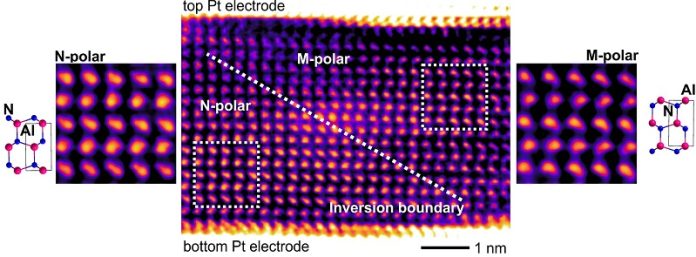
Scientists at Kiel University and the Fraunhofer Institute have made a huge advancement in the world of microelectronics – the tiny parts that make our gadgets work.
They’ve made a breakthrough with a special material that might be the next big thing for computer chips and other devices.
The magic material they’re working with is called ferroelectric aluminum scandium nitride. What’s impressive about this material is its size and strength.
It can be made super tiny – just a few nanometers thick (that’s thousands of times thinner than a human hair).
Yet, it’s super tough and can withstand extreme heat up to 1,000°C. This is a big deal because most of today’s computer chips can only handle a bit of heat before they break.
So, why does this matter? Imagine having computer parts or sensors that can work in really hot places, like inside engines or big factories.
These parts could also be used in medical tools, making healthcare more advanced.
Dr. Simon Fichtner, one of the scientists on the team, mentioned that this new material can work with the standard parts we currently use in our gadgets. This means it won’t be too hard to start using this material in new technologies.
Dr. Niklas Wolff, another researcher, said they’re moving from just studying this material to thinking about how to actually use it in real-life gadgets.
What’s more, this new material is also better at storing information. Memory cells (the parts in gadgets that save data) made of this material can handle extremely hot temperatures.
Today’s common memory cells can only deal with up to 150°C. Fichtner said their new memory cells could still save data even in 1,000°C.
Fichtner had already found out a few years ago that this special material, aluminum scandium nitride, is part of a group called ferroelectric materials.
These materials are special because they can switch between two states when an electric voltage is applied. Think of it like a light switch that turns on and off.
But the great thing about this new material is that it works even better than other similar materials. It can switch states in high temperatures using just a tiny bit of voltage, which is a big win!
The team also discovered how the material switches. They found out that when you apply voltage, the atoms inside the material change places. But the interesting thing is, the whole material doesn’t change at once.
It’s like a domino effect, where one part changes after the other. This could lead to new ways of storing data, not just with 0s and 1s like today’s computers, but in different ways.
This new discovery can change a lot of things. Prof. Hermann Kohlstedt mentioned that this material can be used in better power gadgets, improved computer designs, and even computers that work like the human brain!
The Fraunhofer Institute is also looking at using this material for making speakers and other prototypes. Meanwhile, another institute is thinking about using it for creating better transistors.
In short, this tiny memory chip can handle a lot of heat and might pave the way for better, stronger gadgets in the future.
Follow us on Twitter for more articles about this topic.
Source: Kiel University.



